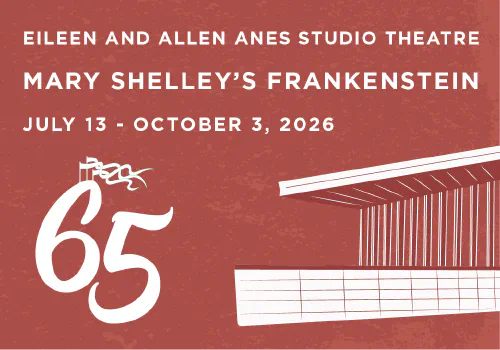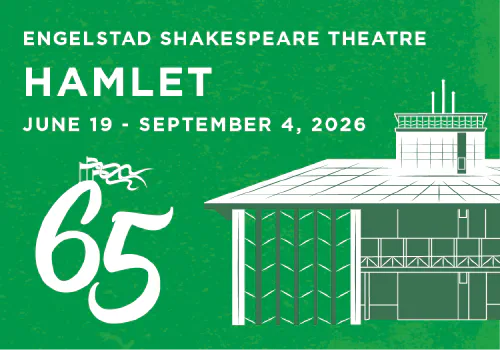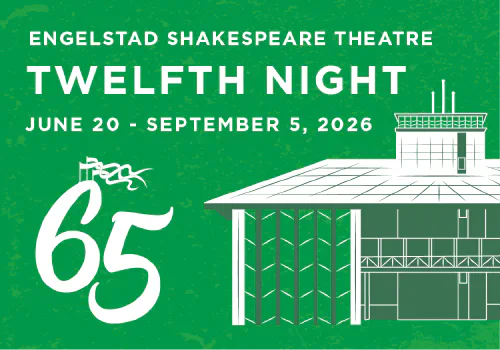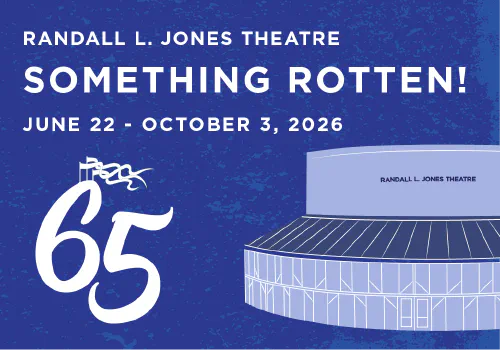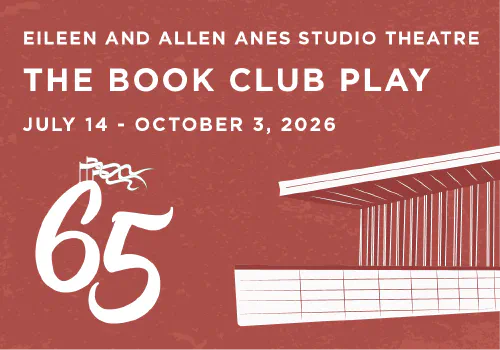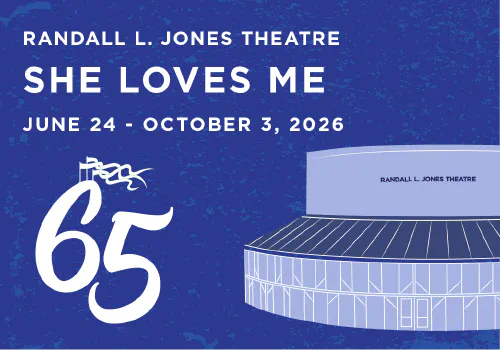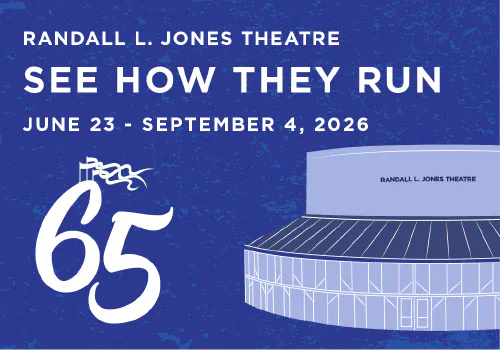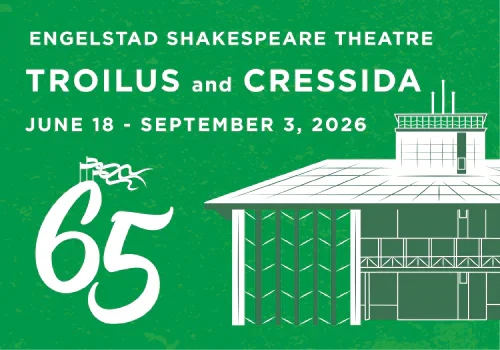Shakespeare in the Schools Education Tour: Why Henry IV?
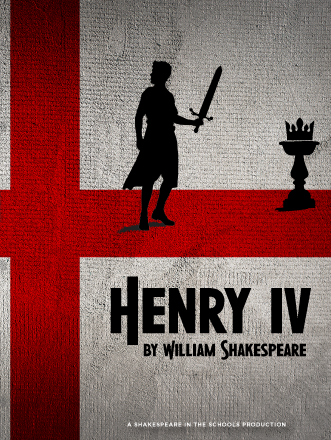
By Liz Armstrong, guest writer
Shakespeare in the Schools education tour director Marcella Kearns loves Shakespeare’s histories more than any of his other plays, a sentiment not all theatre-goers agree with. Kearns is keenly aware of this and urges us to reshape our opinions regarding the genre.
“When people think of Shakespeare’s history plays, they think, ‘Oh, it’s going to be a history lesson,’” Kearns said. “No! It’s an epic adventure. We should rename the history genre as the ‘epic genre.’ Within the histories, you have comedy, tragedy, and adventure.”
Henry IV, Part I is one of his most popular histories, but ranks lower in popularity when the tragedies and comedies are thrown into the mix. So why choose it to be the play for the 2025 Shakespeare in the Schools tour?
Education Director and Producer Stewart Shelley is excited to explain.
“Everybody knows Hamlet. Everybody knows Romeo and Juliet. Or even if they don’t know the story, they know enough to have preconceived notions,” Shelley said. “But with Henry IV, we’re going into it with a completely blank slate. It’s a powerful story for young people to find themselves and see themselves in.”
Henry IV: An Origin Story
A coming of age story is perfect to bring to primarily middle and high school students across the Intermountain West, as each student is experiencing their very own coming of age story. But there’s another layer.
“It’s also an origin story, which is so popular now,” Kearns said. “I think that will speak so beautifully to the young people we are visiting.”
The 75-minute condensed version of Part I tells of King Henry IV and his son Prince Hal, and how the prince is faced with growing up and preparing to assume the throne. It ends with the battle between Prince Hal and his rival Hotspur.
“That really hearkens to a lot of these students, who are at the very edge of this high school experience and are at the jumping off point for adulting,” Kearns continued.
In this particular production, Kearns is exploring how both Prince Hal and Hotspur react to the circumstances they’re given.
“One of them is constantly learning, while the other makes some choices that lead him in the wrong direction. One of them wins and one of them doesn’t. But in this play, as an [origin story] no one in this play is a villain,” Kearns said. “Everyone is just making choices about what they think is right based on what they think is most important.”
Exploring Generational Influence and Morality
Kearns noted that in this production, they’re exploring the expectations the older generation has for the younger generation and how the younger generation has surprised the older generation.
“What we’re also learning is whether they can admit how much each generation really needs each other,” Kearns said. “That was unexpected to me, but it’s something this particular company is naturally bringing forward.”
For actor Anna Rock, this theme was imperative to share.
“It’s important to share with young audiences a story that features teenage characters and their struggle to stand up for what they believe in while reckoning with responsibility, honor, and expectations from their elders,” Rock said.
The other major questions Kearns is leaning into are: “How do you define your moral compass?” and “What do you do with the circumstances you’ve been put in and what’s been given to you?”
“Shakespeare was an invisible playwright; he offers up everybody’s opinions and gives them validity,” Kearns said. “These histories in particular are so beautiful because they give us a chance to swim in the questions rather than think we have fixed answers of how everybody should be.”
Simplifying the Production
Shelley noted that the tour will be different from years’ past because they are bringing the production of Shakespeare’s work back to its roots.
Over the years, the tour has grown more complex, including a lighting and sound system, backdrops, and large amounts of “spectacle to support the story.”
“This summer, I had discussions with theatre teachers at our Tech for Teachers camp, and I just kept hearing over and over again: ‘We can’t do that at our school, we don’t have the equipment,’” Shelley said.
From those discussions, Shelley wanted to simplify the tour.
“We can build this tour in a way that is story-centric and character focused, in a way that’s just as exciting and important and visceral for students watching the production without [the equipment],” Shelley said.
Kearns agreed, telling Shelley she really could do Henry IV with only an “apple crate.”
Shelley and Kearns wanted to show that any school can do the play with just the actors and minimal needs.
“There will be very simple costume changes,” Kearns explained.
The seven actors play a myriad of characters and will make small changes in their physical appearance, so they will focus on transforming themselves vocally and stylistically.
Another change is that the tour is using only actor-generated sound, as opposed to the pre-recorded sound used in previous years.
“We are going back to the roots of theatre and storytelling as a whole, rather than trying to supplement with other things,” Shelley said.
Kearns’ Journey with the Festival
The director’s first experience with the Festival was as an educator.
“I brought my own group of students to the [Shakespeare] competition,” Kearns said. “Being able to come here and see the work and passion of young people from so many places reinforced my desire to work here.”
Kearns actually directed the Festival’s former education director, Katherine Norman, years prior.
“She liked my approach [as a director]. She proposed the tour to me without knowing I had just worked on Henry IV for the first time,” Kearns said.
For Kearns, it felt kismet, and as an educator, the tour is especially important.
“We see such a cross section of humanity in this play,” Kearns said. “All of these characters are deeply human and flawed, and this play has a way of speaking to young people and the expectations that are put upon them. I hope they can thread the needle and think of how they should live their lives given whatever is put in their laps.”
The Public Performance
There will be a free public performance in Cedar City, UT, on Friday, February 7 in the Southern Utah University Auditorium Theatre at 7:30 pm.
“It’s an opportunity to welcome our community into this experience and share that the tour is integral to educating our future audience members,” Shelley said.
Shelley added that the tour is not possible without incredible sponsorships, which primarily comes from the Utah Legislature through the Professional Outreach Programs in the Schools (POPS).
“We also have a grant from Arts Midwest that makes it possible for us to go out of state and capture more of the Intermountain West,” Shelley said.
Other sponsors include Ally Bank, The Guild of the Utah Shakespeare Festival, and Orem Care, with special thanks to Southern Utah University.
Finally, Shelley would like to thank the Festival production team.
“What they do is Herculean,” Shelley said. “It’s not an easy thing to do, and they all do it with a smile on their face and excitement and enthusiasm to teach the rising generation of theatre artists and patrons.”
For more information on the tour click here.


